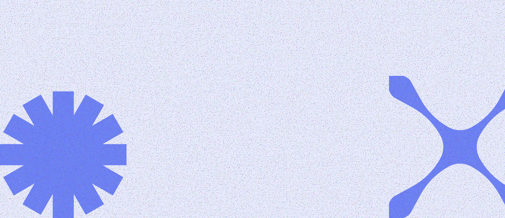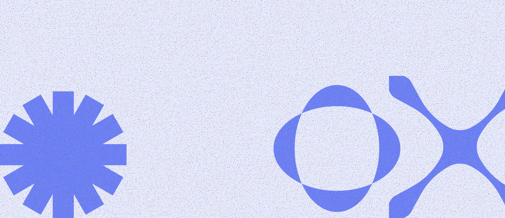This guide clarifies everything you need to know about CRUD apps and their vital role in the no-code development world.
Below, we cover the following:
What is a CRUD app?
What does CRUD stand for?
What are the benefits of CRUD?
What are the three components of a CRUD app?
CRUD app use cases
Examples of CRUD for no-code applications
- Approval apps
- Forms
- Portals
- Other CRUD apps
Building a CRUD app with Starhive
Building CRUD apps with enhanced no-code capability
What is a CRUD app?
A CRUD app is a software application that performs four essential operations: Create, Read, Update, and Delete data. These four functions form the backbone of almost every digital interaction.
CRUD functionality is everywhere, from saving new contacts on your phone to managing product databases in an e-commerce store. They’re built to help users easily add, view, edit, or remove data in structured ways, making them the foundation of countless applications across industries.
What does CRUD stand for?
The CRUD acronym is exactly as described above. Here’s how those four functions are essential for managing and manipulating data in any application:
Create: Adding new data entries.
Read: Retrieving data for display or processing.
Update: Modifying existing data entries.
Delete: Removing data that’s no longer needed.
Whether you're building a database to track inventory or a user management system, CRUD operations offer a standardised way to manage the data lifecycle within your app.
What are the benefits of CRUD?
Just like its four core functions, you can also distinguish the advantages of CRUD apps into four key benefits:
Consistency: CRUD provides a uniform approach to data, making it easy to understand, manage, and access.
Efficiency: CRUD operations enable quick modifications, which reduce time and resources.
Usability: CRUD’s systematic structure makes the app user-friendly, letting users interact seamlessly with the data.
Reliability: CRUD functionality ensures accurate data handling, reducing errors in applications like customer management systems and reporting tools.
In simple terms, CRUD apps streamline data management, ensuring data remains up-to-date and accessible for various uses.
It empowers end users and developers with a tried and trusted, recognised method for data processing and high levels of security control.
What are the components of a CRUD app?
Unlike the CRUD functions and benefits listed above, you can probably contain the building blocks of a CRUD app into three necessary ‘ingredients’.
Database: The storage system where all app data is saved.
Logic layer: The rules governing how data can be created, accessed, modified, or deleted.
User interface (UI): The visual layer where users interact with the app, input data, and see outputs.
User permissions: The rules that ensure the right people can perform the correct CRUD functions.
These components work together to make CRUD applications intuitive and effective for managing structured data at scale.
CRUD app use cases
As you’d expect, given their simplistic, easy-to-use functionality, CRUD apps are versatile and can fit into various use cases across different industries, such as:
E-commerce: Managing product catalogues, customer data, and order histories.
Healthcare: Storing patient information and medical records.
Human Resources: Managing employee data, payroll, and performance records.
Project management: Tracking tasks, deadlines, and project resources.
Examples of CRUD apps
Let’s explore how CRUD applies to both advanced and simple applications.
Approval apps
Approval apps streamline workflows by allowing users to submit requests (Create), review (Read), update statuses (Update), and remove completed or outdated requests (Delete).
Use cases include everything from expense approvals and leave requests to project approvals and procurement matters.
Their functionality can even stretch beyond the limits of CRUD as users can define the workflow logic of which statuses should exist and what happens when the status is changed to approve or declined.
Forms
Forms enable data collection, which is ideally suited for CRUD functionality. Users can submit information (Create), view previous entries (Read), update records (Update), and delete old data (Delete).
In terms of development, no-code platforms allow users to create dynamic, interactive forms without any coding knowledge, helping businesses streamline and automate their data processing while reducing manual work and actioning approvals.
Form apps arguably go beyond the basics of CRUD at the post-submission stage. The possibilities here are endless in fact – from sending a notification to creating a new task for someone to connecting to another system entirely.
Portals
Portals allow for role-based access where different users interact with specific data across the components of CRUD. A customer portal, for example, might enable customers to add a new bank card’s details, for instance (Create), view order histories (Read), change an email address (Update) and delete saved addresses (Delete).
Again, just like approval apps and forms, portals can be built and deployed quickly using no-code tools, allowing businesses to establish a centralised platform for users without a long development cycle.
Portals go beyond basic CRUD apps in the sense that they enable a set group of users to ‘go behind the scenes’ of the customer portal and perform more advanced actions than the actual customers themselves (e.g. updating the address on a pending order, or entirely deleting the account).
This essentially means that they rely on multiple CRUD operations combined – and this will more than likely be dictated by user permissions.
Basic CRUD apps
For example, in contact management apps, users can add new contacts, fill in details like names, phone numbers, email addresses, and notes (Create) and view or search through their contact list to access stored details. Often, data can be sorted by name, company, or last interaction date (Read).
Users can also modify contact information when it changes, such as updating a phone number, adding a new email address, or updating a contact’s status (Update). When contacts are no longer needed, users can remove (Delete) them from the list, keeping their data organised and relevant.
Then, we have to-do lists. For example, users can add (Create) new tasks, set deadlines, and assign categories or priorities to manage workload efficiently – viewing (Read) their task list at any time, organised by due date, priority, or category. This allows them to see what needs to be done and when.
As tasks progress, users can change (Update) the status, adjust due dates, or add notes, making sure that the to-do list remains a reliable reflection of their work. Completed or obsolete tasks can be removed (Delete) to keep the list manageable, helping users focus on what still needs attention.
Social media platforms like Reddit (most notably) are fundamentally CRUD applications, as users interact with each other by creating, viewing, updating, and deleting content.
This includes submitting (Create) new posts or comments, adding multimedia, and engaging with communities by sharing original or curated content. Users can also browse, search, and filter posts (Read) from various topics and discussion to follow communities, read comments, and upvote or downvote content.
Users can edit (Update) their own posts and comments if they need to add new information or correct errors. Reddit also allows community moderators to update tags or add flair to posts, improving categorisation.
They can also delete their posts or comments, while moderators and admins can remove content that violates guidelines, ensuring that the platform remains relevant and adheres to community standards (Delete).
Building a CRUD app with Starhive
So, now for the big question. How can you build a CRUD app through a no-code platform like Starhive?
Let’s explore the essential steps to set up a database, add logic, design a user-friendly interface, and set the right user permissions. Starhive’s no-code tools simplify these processes, making it easy to structure data, define behaviour, and craft an intuitive experience for end-users.
1. Build your database
Creating a strong database foundation in Starhive begins with understanding how to structure your data effectively within our flexible data platform.
Define your data: Start by identifying the main data entities or ‘objects’ (as we call them) your app needs. For example, if you’re building a facilities management app, your core objects might include ‘Building,’ ‘Air con systems,’ or ‘Contractors.’ Create each type of object within Starhive and configure each one with the fields (or attributes as we call them) that reflect that data.

You can also import your data into Starhive if it’s already stored elsewhere (which will be more than likely).
Define your relationships: Define relationships between tables to allow your app to display connected data seamlessly. Starhive supports one-to-one, one-to-many, and many-to-many, and even self-referential relationships, making it easy to create complex connections across your data without coding.

Define access permissions and roles: Establish permission levels to manage who can Create, Read, Update, or Delete records. With Starhive, you can assign permissions based on user roles, ensuring each user or team member only accesses data relevant to their role. This step is critical for maintaining data security and integrity.
2. Add logic to your data
Adding logic in Starhive is where you bring your app to life by setting up workflows and automations that govern how your data behaves, making your CRUD app dynamic and responsive without coding.
Set up workflows: Workflows define the states and transitions your app data can go through. For example, data for a task might go through the states ‘to-do,’ ‘in progress,’ and then ‘completed’ or ‘cancelled’. Having defined states and a transition order for those states means you can create your app’s processes and ensure your data adheres to them.
Set up automations: Automations in Starhive allow you to trigger actions based on specific events. For example, you can set an automation to send an email notification whenever a new object is made in the database or update an object’s attributes when its status changes. Starhive’s automation builder offers a no-code, visual interface for easily designing automation rules.

Apply conditional logic: In Starhive, there are several areas where you can apply additional, conditional logic to help you set rules on data inputs to enforce consistency, such as making certain data attributes mandatory or unique. Or apply conditional logic to have the user view only specific data.
Automations, filters, and data validation rules can utilise the Starhive query language — StarQL. Starhive offers autocomplete whenever you start using StarQL, so you don’t need prior knowledge of query languages. If you’d like the full picture, look at our StarQL documentation.
Also, you can set user permissions to add logic, just like you can when building your database.
3. Decide your user interface
Your user interface (UI) is the gateway through which users interact with your CRUD app. Starhive’s no-code platform helps you make the experience intuitive and tailored to your app’s needs without needing much (if any) technical expertise.
You have three options for building your user interface with Starhive.
a) Create a drag-and-drop Starhive Interface
b) Use the native Starhive user interface
c) Create your own coded user interface and connect it with Starhivea) Create a drag-and-drop interface
You can build interfaces in Starhive using drag-and-drop widgets. With these widgets, you can:
Create user-friendly forms: Forms are essential for gathering and updating data in a CRUD app. Starhive’s form widget enables you to add, reorder, and customise fields to make the data entry process smooth and organised. Apply logic to display only the fields relevant to a given input (thus streamlining the form experience) and set hidden default values where needed.
Add dashboards and data visualisations: Use Starhive’s dashboard features to provide users with an at-a-glance overview of key metrics and insights. You can add charts, graphs, and KPI indicators to your dashboards, making it easy for users to see trends or summary data. Dashboards are useful for managers or users who need quick insights without diving into detailed records.
b) Use the native Starhive user interface
You can also work directly in Starhive's data platform and interact with your data that way. Starhive provides different ways to view and update your data such as list, gallery, timeline, and board view.

List view: This displays all objects for a particular type in a simple list format. It is the default view for every type and is automatically available when a type is created.
This view is ideal for quickly scanning through objects and their attribute values.
Gallery view: This presents objects as a visual gallery, with a focus on images (object avatars).
This view is user-created and is particularly useful when a visual overview is necessary, such as for displaying product catalogues, visualising portfolios etc.
Timeline view: This displays objects along a timeline, providing a chronological perspective.
To configure this view, the object type must include at least two attributes of type Date or DateTime, which are used to define the start and end dates for each object on the timeline.
Users can create multiple timeline views for each object type, each based on different date attributes. Common use cases include product roadmaps, employee vacation planning, project milestone tracking etc.
You can select a scale of ‘Weeks’ or ‘Months’ to see objects in a manageable way.

c) Create your own coded user interface and connect it with Starhive
Thanks to Starhive’s API, you can create custom-coded user interfaces using external tools and connect them to Starhive. Perfect for when you need a particular UI or want something that is entirely branded to your organisation.
You can see more about how to do this here.

Build CRUD apps with enhanced no-code capability
What’s more, our engineers are working hard in the background to make it even easier for you to create user interfaces for your Starhive CRUD apps, starting with making a Starhive interface become accessible outside of Starhive and building the capability to package up your data, logic, and UI into an official Starhive app that can be shared with users.
Stay tuned for more updates on this. In the meantime, feel free to download our ultimate guide to get up to speed on no-code.
Inside, you’ll find key information about the topic, interesting use cases, and instances where it can help you and your business in ways you perhaps never imagined.
Share this post
About the author
.png)
Blog first published on 21/11/2024, last updated on 19/12/2024.




